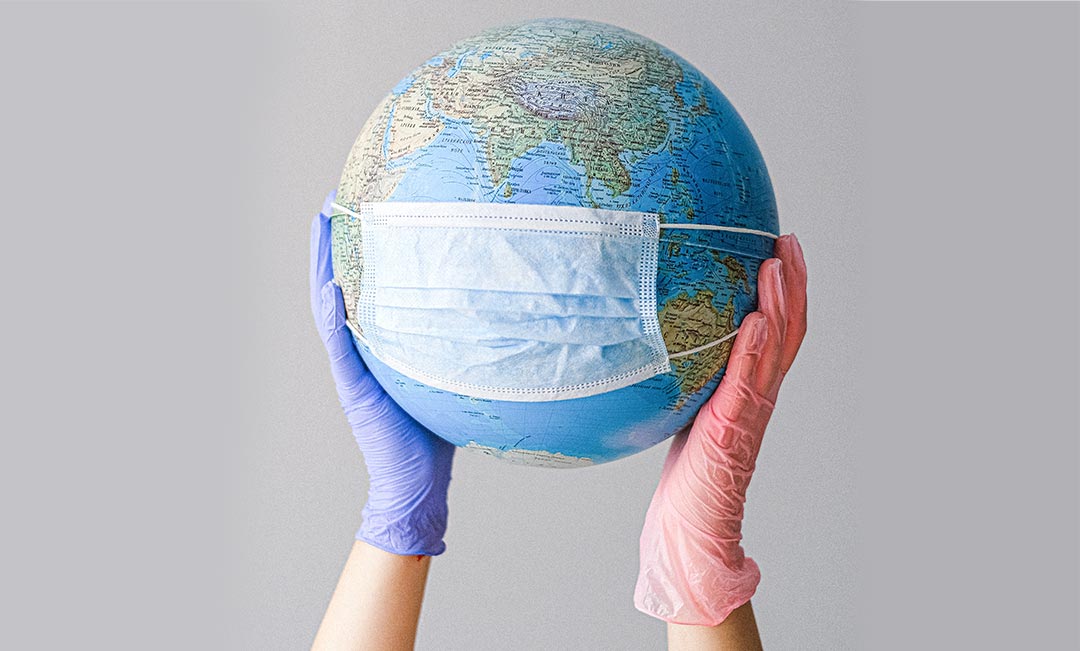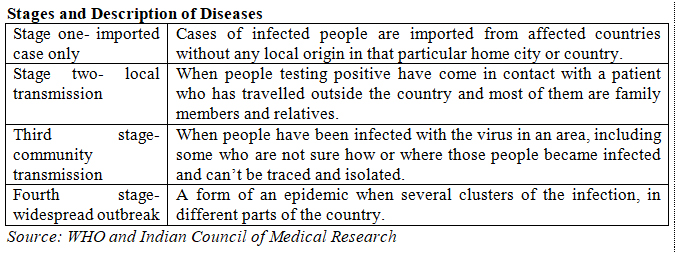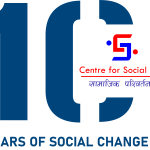
COVID-19 and Government Initiatives in Nepal
Amrita Sigdel
Introduction
The corona virus disease (COVID-19) is zoonotic (transmitted between animals and human beings) and disease with high risk to the persons with long term diseases like diabetes, heart and kidney caused by Severe Acute Respiratory Syndrome Corona Virus-2 (SARS-CoV-2). It spreads primarily through droplets of saliva or discharge from the nose when an infected person coughs or sneezes when the people are found with a loss of taste or smell including common fever, cough, tiredness along with other signs as shortness of breath or difficulty breathing, headache, muscle aches etc. COVID-19 was first emerged from Wuhan China with pneumonia of unknown aetiology in 44 symptomatic patients.
At the first hit of COVID-19 outbreaks, public health emergency of international concern (PHEIC) declared on January 30, 2020 and global pandemic by WHO on March 11, 2020, there was no any treatment procedure except practice of respiratory etiquette. WHO suggested staying safe by taking precautions, such as physical distancing, wearing a mask, keeping rooms well ventilated, avoiding crowds, frequently cleaning hands, and coughing into a bent elbow or tissue. COVID-19 is transmitted/spread in four stages and government initiatives in each and every stage are important to prevent and protect the people from fatal disease along with letting the nation to further critical situation.

Beside China, the first case was detected in Thailand and Nepal on January 13 and in India on January 27, 2020. Till February 17, 2020, twenty-six countries including China were affected by COVID-19 and by May 18, 2021 over 164 million cases with 3.4 million deaths have been reported and 222 countries were affected worldwide. According to WHO, till May 19, 2021, total 1,422,282,170 vaccine-doses were inoculated.
COVID-19 and Nepal
The first case of COVID-19 in Nepal was imported case found with developed symptoms in a male from China on 13 January and confirmed on January 23, 2020 by WHO laboratory from Hong Kong and second case on March 17 in a girl back from France. Both were recovered; however, the first death was reported on 29-year-old postnatal mother on May 16, 2020. Second stage case was identified in contact with returnee from India on April 4, 2020. In between first and second stage, total 1521 tests were done, detected 9 positive individuals and only recovery of first case. Ministry of Health and Population (MoHP) declared the community transmission, when infection was transmitted to some districts/local levels on September 4, 2020 till the date out of 745490 tests 44236 cases were detected, 271 death and 25561 were recovered case. The first variant called Alfa (B.1.1.7) and Second variant Delta (B.1.617.2) were confirmed on January 18,2021 and May 18, 2021 followed by third Kappa (K417N or AY.1 or B.1.617.1) variant on June 21, 2021 respectively in Nepal.
Government Initiatives towards COVID-19
After the first COVID-19 case detection in Nepal on January 13, 2020, Government of Nepal (GoN), like other countries of world was in a state of confusion due to lack of known way of transmission, mode of escape along with adverse effect on health and brought unprecedented challenges in health system. Limited infrastructure and availability of resources, Nepal’s existing health system struggled to manage, preventive and promotive actions with rising cases to screening, establishing diagnosis, and accommodating treatment along with management of dead body declared COVID-19. In this regard Nepal government initiatives are discussed here.
GoN declared/imposed a nationwide lockdown from March 24–July 21, 2020, prohibiting domestic and international travels, borders closures and halted other services except most-essential. Additionally, GoN established a COVID-19 crisis management system advised by experts from various sectors and focused on setting up temporary hospitals, quarantine, isolation and intensive care unit (ICU) beds in each province. As the National Public Health Laboratory (NPHL) lacked the required reagents, the sample was shipped for testing to the WHO collaborating centre in Hong Kong to confirm first case. According to MoHP press release, only Sukraraj Tropical Hospital was declared as COVID special hospital and other 7 laboratories were established in each province except NPCL till April 4, 2020. Laboratory services were extended to 16 laboratories including capacity enhancement and service expansion of NHPL till May 2, 2021. Out of total 2600 ICU 1423 and out of 900 ventilators 583 were allocated for COVID-19 throughout the country.

Till the declaration of community transmission (third) stage in some districts and local levels, there were 47 laboratories (34 governmental and 13 private). Testing capacity is expanded to 58 governmental and 36 private laboratories till May 21, 2021. GoN also initiated first (2500196) and second (731653) dose vaccination with the support of vaccines by neighboring countries giving priority to frontline workers and highly risk people of different age-group till June 22, 2021.
In between first and second stage transmission data dissemination was more detail due to detection of few cases. As capacities of laboratories expanded and cases steadily raises, data dissemination and certification from national authorities become more challenging. Two hotlines number are still serving to the public including social and other types of media in terms of COVID-19 related information dissemination public friendly.

GoN formed the High-level COVID-19 Coordination Committee, the COVID-19 Crisis Management Centre (CCMC), and activated the National Disaster Risk Reduction Management Authority, along with their respective sub-national entities. In order to minimize the severe health risk from COVID-19 pandemic, MoHP, has accelerated preventive, promotive and prohibitory actions including formulation rules, regulations and guidelines. Aligned with the federal guidelines and directives, each provincial Ministries and provincial health directorates are responding to COVID-19, Health sector preparedness, response and lessons learnt executed various preparedness and response measures. Local government’s implemented preparedness and response activities based on federal and provincial government mandates, while all are responsible to prevent, manage and control the spreading of COVID-19. Subsidies, insurance and other supports to the weak and needy people provided by different level of government during lockdown in 2077. GoN also providing treatment cost to the hospitals treating COVID-19 cases based on complexity as Rs 3500, Rs 7000 and Rs 15000 for general, medium and severe patient per-day respectively.
Conclusions
Since the emergence of global pandemic, COVID-19 from China, total 222 countries with more than 166.2 million of infected cases with 3.4 million deaths (18 May,2021) and still increasing rapidly. Nepal was less affected during first wave but highly affected by second wave with more than 6 thousand death and 4.5 lakhs cases till May 18, 2021. In order to minimize the severe health risk, preparedness and awareness of COVID-19, GoN has focused on immunization collaborating with international levels and working through inter-governmental coordination outside and inside the nation. Making awareness campaign , early and effective lockdown , initially with proper contract tracing and investigation, keeping health sector in highly sensitive area with supportive laws and rule, coordinated efforts between national and international level for preventing and protecting people with immunization ,offered with discounts in business, relief materials (Rahat) for needy people were some strength of government initiatives .On the other hand, insufficient records management loosing effectiveness of lockdown in later periods with no contract tracing , unsuccessful in crowed management, claims regarding corruption were the areas of weakness of government during COVID-19.Inorder to fight with this pandemic and minimize the further harm GoN has to extend effective health service along with better plan and policies .
References
Gautam, D. Nepal’s Readiness and Response to COVID-19: Key Initiatives, Emergency Challenges, and the Way Forward. National Disaster Risk Reduction Centre, Kathmandu, Nepal, 2, 2020.
Ministry of Health and Population. COVID-19 Press release 2076, 2077 and 2078.
MoPH- Responding to covid-19.Health sector preparedness and lesson learnt.
Nepal – COVID-19 Response Situation Report No. 01, 18 May 2021.
Panthee, B. et., al. COVID-19: The current situation in Nepal. 37, September, 100737, 2020.
The views and opinions expressed in the piece above are solely those of the original author(s) and contributor(s). They do not necessarily represent the views of Centre for Social Change.

Ms. Amrita Sigdel is Lecturer in different schools and colleges. She has completed M.Sc in Chemistry from Tribhuwan University and is studying M.Ed in Science at Mahendra Ratna Campus.
©2021 Centre for Social Change, Kathmandu
